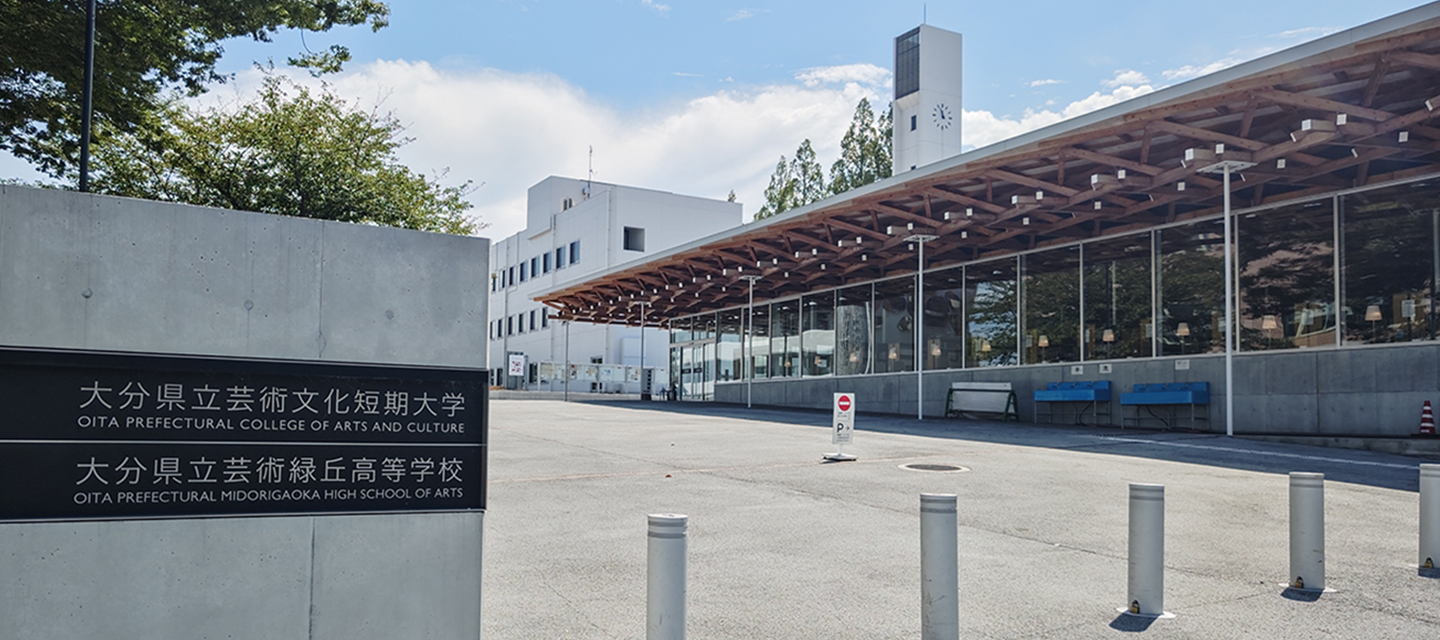
- UNIVERSITY
- >
- 製品
All about Animal Glue part I - Basic Knowledge: Learn about The Traditional Japanes Art Material Made from Cow Skin!
Amongst all the art materials that gathered by PIGMENT, we are very proud of the variation and abundance of our collection of Animal Glue (Nikawa), though it’s rarely mentioned even in our own introductions of art materials. To make it more widely known, this time we are going to do a basic introduction for Animal Glue and its must-knows in this article.
日本語はこちら。
Animal Glue (Nikawa) is adhesive material made from broth - a liquid preparation in which animal skin, bones and/or tendons have been simmered. Nikawa made from animal skins is the most popular among its kinds. And the Japanese term “Nikawa” itself actually came with the meaning “simmered from skin”.
In Japan, cow skin is the most common source of Nikawa, though others like deer, rabbit, fish are also widely used.
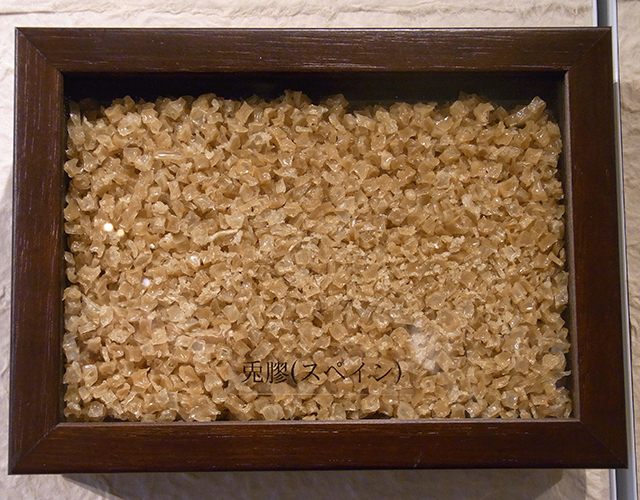
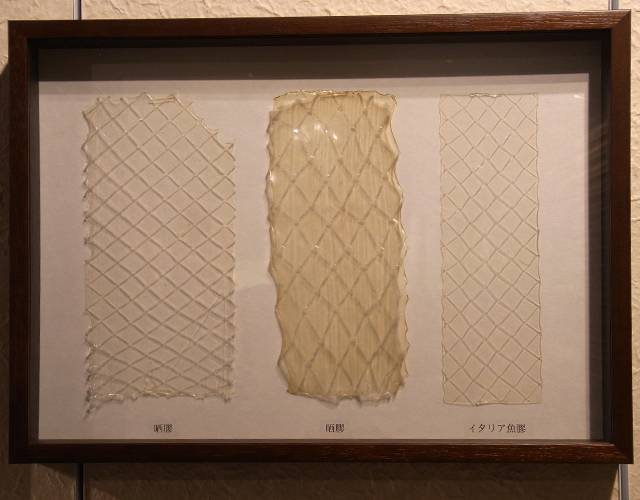
The main composition of Animal Glue (Nikawa) is collagen, which is one sort of proteins. It turns to liquid while heated and solidifies again after cooled down. To make it simple, it could also be viewed as one kind of meat jelly or gelatin.
After the impure ingredients are taken away from the Nikawa, it becomes edible gelatin that everyone is familiar with. Though Nikawa seems rather strange to us, it actually has been part of our lives.
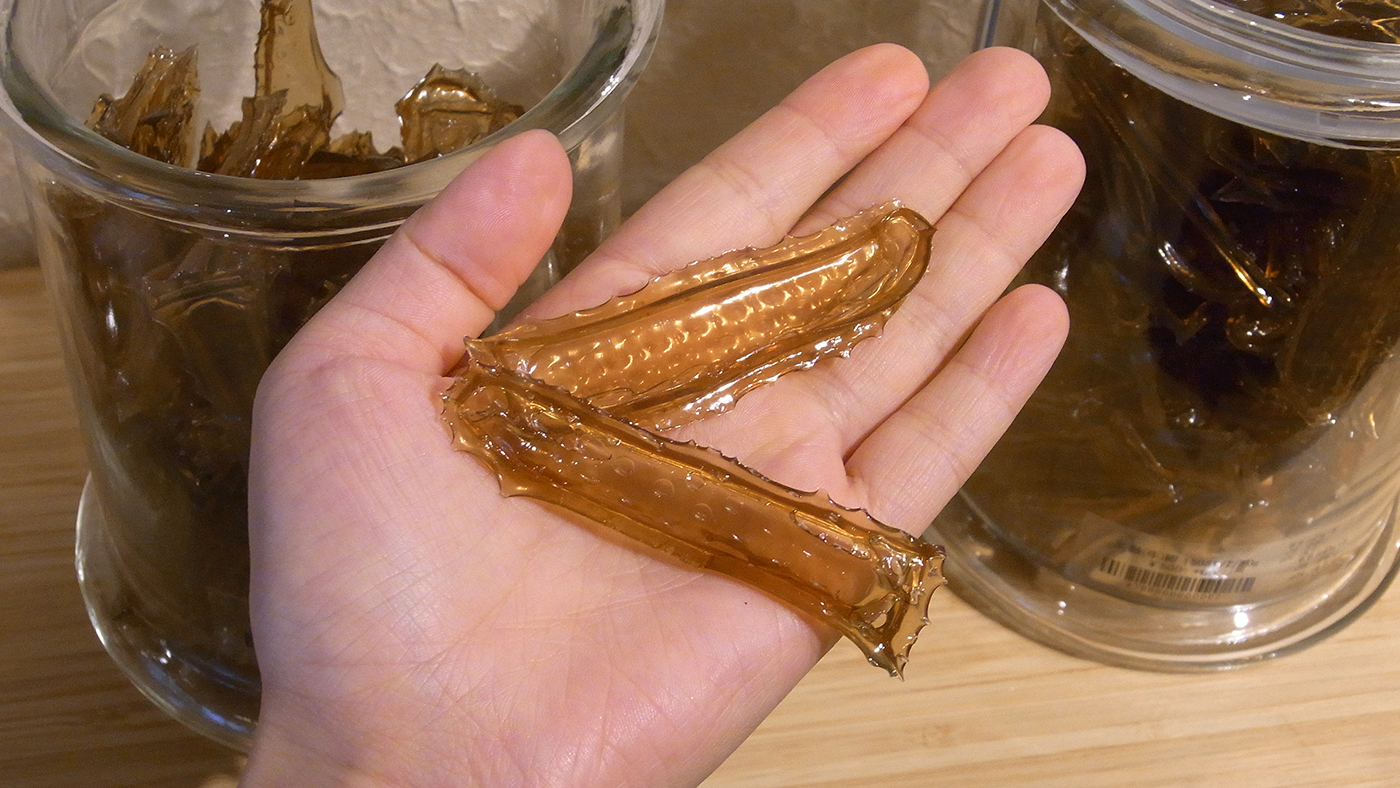
- ▲At PIGMENT, Nikawa is sold like this picture per 10 grams.
Generally speaking, Animal Glue (Nikawa) is sold in dried status for it is the easiest way to preserve it. To be used in painting, it should be added with water and soaked until it gets soft.
It’s advised to heat up and melt it over another vessel of water as showed in the picture.
After the melted Nikawa is mixed with pigments, it’s ready to be applied as basic art material in Japanese Style Painting.
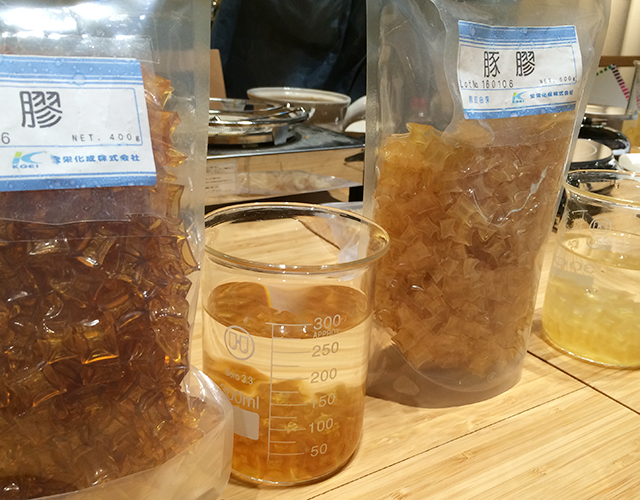
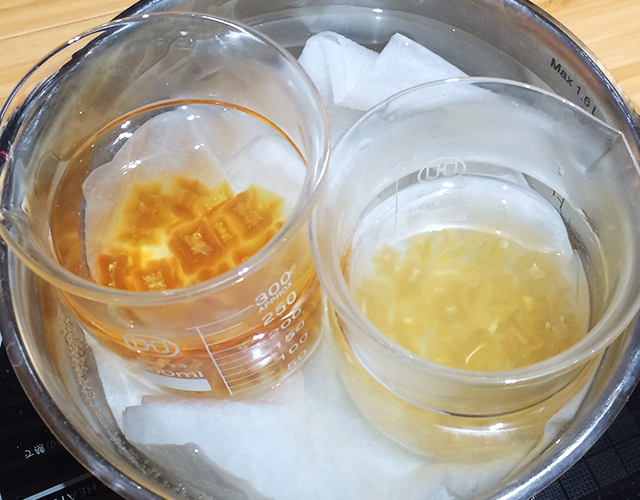
The sorts of animals considered suitable for Nikawa extraction are different from country to country. It is most common to use rabbit in Europe, yet for Japan it is cow that is the most popular. There are also several places using other animal sources like whales and/or dogs. The selection preference is heavily influenced by local culture, especially the dietary culture.
Animal Glue extraction is rarely the primary purpose for hunting. It’s more likely for people to use the leftovers that remain in the process of preparing food and/or daily necessities.
Besides that, the final used-ups after extraction for Nikawa could still be further used as fertilizer in agriculture. Also, burnt bones are yet another kind of black pigments, which is called Bone-Black. It is our ancestors’ wisdom, to make use of every bit of animal. They made zero waste and produced no trash, until around the Edo era.
Moreover, animal skins once served other purposes can still be the source of Animal Glue. For instance, after new skin is applied to drums, the replaced old skin in worsen condition could still be the source for Nikawa extraction.
People may think that Animal Glue extracted from skins in worsen condition would have lower quality as a result, but it’s not definitely so. Though fresh skins are comprehensively with good quality in general, used ones still have their strengths. For different effects and based on different artistry preference, fresh Animal Glues are not necessarily with the most ideal stickiness and intensity.
Even with the same Nikawa, its artistic performance can be different from time to time. It could be difficult for pigment mixtures to solidify in hot summer days, and therefore impossible to paint with; on the other hand, it gets solidified too fast in cold winner and hence hard to control.
Therefore, when painting in places without air-conditioning as in the old times, painters have to coordinate with the environment and the state of the Nikawa at hand, and adjust accordingly to create the most suitable material by themselves.
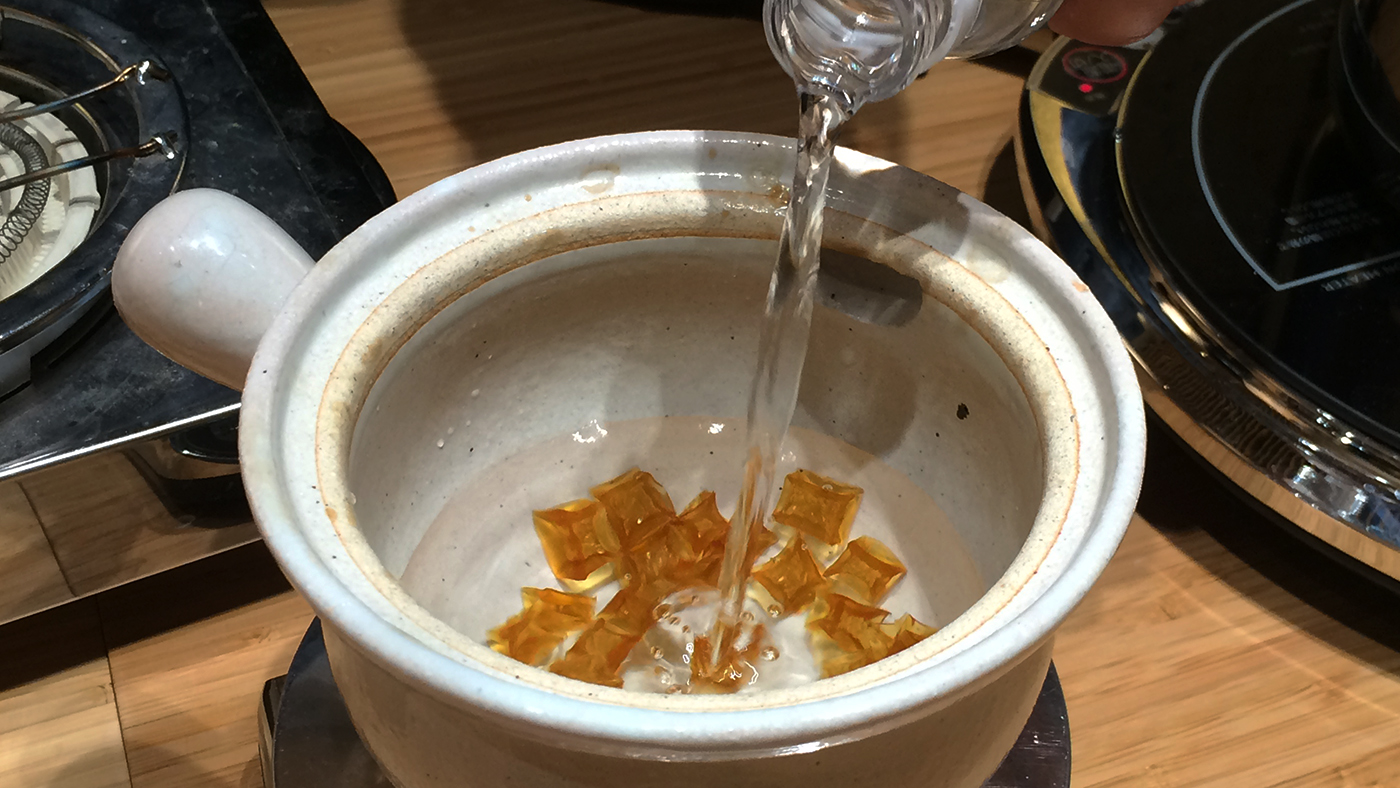
▲In this picture, artist boils and melts Animal Glue directly in water, instead of heating up over another vessel.
Animal Glue is mainly used as art material in painting nowadays. However, before the invention of synthetic resin, Nikawa used to be widely applied as adhesive material. At that time, people made good use of its “weak point” - that it melts when heated. As in restoration work process, it doesn’t conduct damages to woods and make them break. And that’s also why Animal Glue is still in use for the restoration of high quality/value musical instruments today.
________________________________________________
And that’s our introduction for Nikawa: Basic Knowledge of Animal Glue part I. Hopefully it will help you to enjoy even the process of selecting your own Nikawa. Next time when we present Basic Knowledge of Animal Glue part II, we will also discuss how to use it.
________________________________________________
PIGMENT
Open Hours:11am - 8pm, Closed on Mondays & Thursdays
Tel:+81(0)3−5781−9550
Address:Harbor One Building 1F 2-5-5 Higashi-Shinagawa, Shinagawa-ku, Tokyo 140-0002 JAPAN
Access:3-minute walk from Tokyo Waterfront Area Rapid Transit Rinkai Line 'Tennozu Isle Station'
5-minute walk from Tokyo Monorail 'Tennoz Isle Station'
---
Please check out our Facebook & twitter for the latest information!
■Facebook:http://facebook.com/terrada.art.award
■Twitter:@pigment_tokyo
---
Share your thoughts / inquiries to pigment@terrada.co.jp
>> If you want to know more about PIGMENT, please check last blog as below!
"POWWOW with the experts at Art Supply laboratory「PIGMENT」"
"【The Chosen one!】Star products of PIGMENT〜Colors〜"
"【The Chosen one!】Star products of PIGMENT〜Tools〜"
"Experience the new material with professional,HOW TO APPLY METAL LEAF@PIGMENT"
"T-Art Academy will be rebooted on coming April! Experience the carefully selected new material and technique from the professional."
tag
GROUP WRITER
PIGMENT / PIGMENT
東京・天王洲アイルにある画材ラボPIGMENT(ピグモン)。 PIGMENTでは、日本の伝統画材をはじめ世界各地の希少で良質な画材をセレクトし展示・販売しています。アーティストやクリエイターのみなさんにとって制作のパートナーともいえる画材や素材。PIGMENTで取り扱っている多種多様な画材、素材の魅力や使い方などをPIGMENTラボスタッフから発信していきます。
RANKING
-
1
【日本一美しい図書館】石川県立図書館に行ってきた
- 手羽イチロウ
- 11,241
-
2
五美術大学と五芸術大学
- 手羽イチロウ
- 9,872
-
3
-
4
-
5


